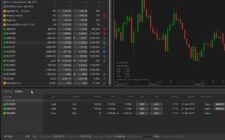Are you interested in forex trading but need help knowing where to start? With so many strategies available, it can take time to determine which one would best suit your goals and preferences. To help make this decision easier, let’s look at the factors that should be considered when choosing a forex trading strategy.
Whether you are a beginner or an experienced trader, we will provide all the necessary details that must be evaluated before committing to any strategy. By understanding these criteria clearly, traders of all skill levels will have access to information they can use to make an educated choice on how they would like to approach the markets.
Understand the different types of forex trading strategies and which are most suitable for your goals
To effectively trade forex, it is crucial to understand the different types of forex trading strategies and determine which one aligns with your specific goals. Forex trading is a complex and ever-changing environment that can offer lucrative potential rewards when approached strategically. It requires a meticulously planned approach that leverages various forex trading strategies to manage risks and potentially maximise profits.
Different strategies may favour long-term or short-term investment, utilise technical or fundamental analysis, or rely on risk management through stop-loss orders. By carefully examining the nuances of these strategies and objectively assessing which aligns best with your goals, you can execute informed trades with confidence and conviction. Ultimately, understanding and selecting top-performing forex trading strategies can be the key to success in the highly competitive world.
Assess the risk levels and determine how much you can afford to lose
Before selecting a forex trading strategy, it is crucial to assess the risk levels associated with each option thoroughly. The forex market is known for its high level of volatility and uncertainty, which means that no strategy can provide a guarantee of profits or eliminate losses. It is essential to have a comprehensive understanding of your risk tolerance and carefully consider how much you can afford to lose before committing to a specific trading approach.
When evaluating the risk associated with forex trading strategies, it is essential to consider various factors. These factors include your financial situation, investment goals, and the capital you are willing to risk. By considering these elements, you can make a more informed decision and choose a strategy that aligns with your risk tolerance and financial capabilities.
Additionally, it is crucial to remember that trading in the forex market involves the possibility of losses. Therefore, it is essential to approach forex trading with caution and select a strategy that not only matches your risk tolerance but also enables you to manage potential losses effectively. By understanding the risks involved and choosing a suitable strategy, you can navigate the forex market more confidently and increase your chances of success.
Research the market thoroughly to be aware of any emerging trends or news that could affect your trades
One of the most critical factors to consider when choosing a forex trading strategy is to research the market thoroughly. The forex market is highly influenced by various global and economic events, which can significantly impact currency exchange rates. Therefore, stay updated on emerging trends or news that could affect your trades.
By conducting thorough market research, you can make more informed trading decisions and adjust your strategy accordingly. It can include staying updated on economic indicators, political developments, and global events that may impact the forex market. Additionally, you must also have a clear understanding of the currencies you are trading and the underlying factors that could affect their value.
Set a trading plan with clear objectives and timeframe
Another essential aspect to consider when choosing a forex trading strategy is to set a trading plan with clear objectives and a timeframe. A well-defined plan can help you stay organised and on track towards achieving your goals. It should include your preferred trading style, how you want to diversify your forex portfolio, risk management strategies, entry and exit points, and the timeframe for executing trades.
By setting clear objectives, you can better track your progress and make necessary adjustments to your strategy. A well-defined timeframe also allows you to manage your trades more effectively, avoiding impulsive decisions that could lead to losses.
Analyse your past performance to identify areas for improvement
Lastly, it is crucial to analyse your past performance when choosing a forex trading strategy. It can help you identify areas for improvement and make necessary adjustments to your approach. By keeping track of your trades and their outcomes, you can gain valuable insights into what works and what doesn’t.
Take note of the strategies that have yielded positive results and those that have not performed well. By doing so, you can refine your trading plan and continuously improve your approach to the forex market. It is also essential to be open to adapting and evolving your strategy as the market conditions change.




